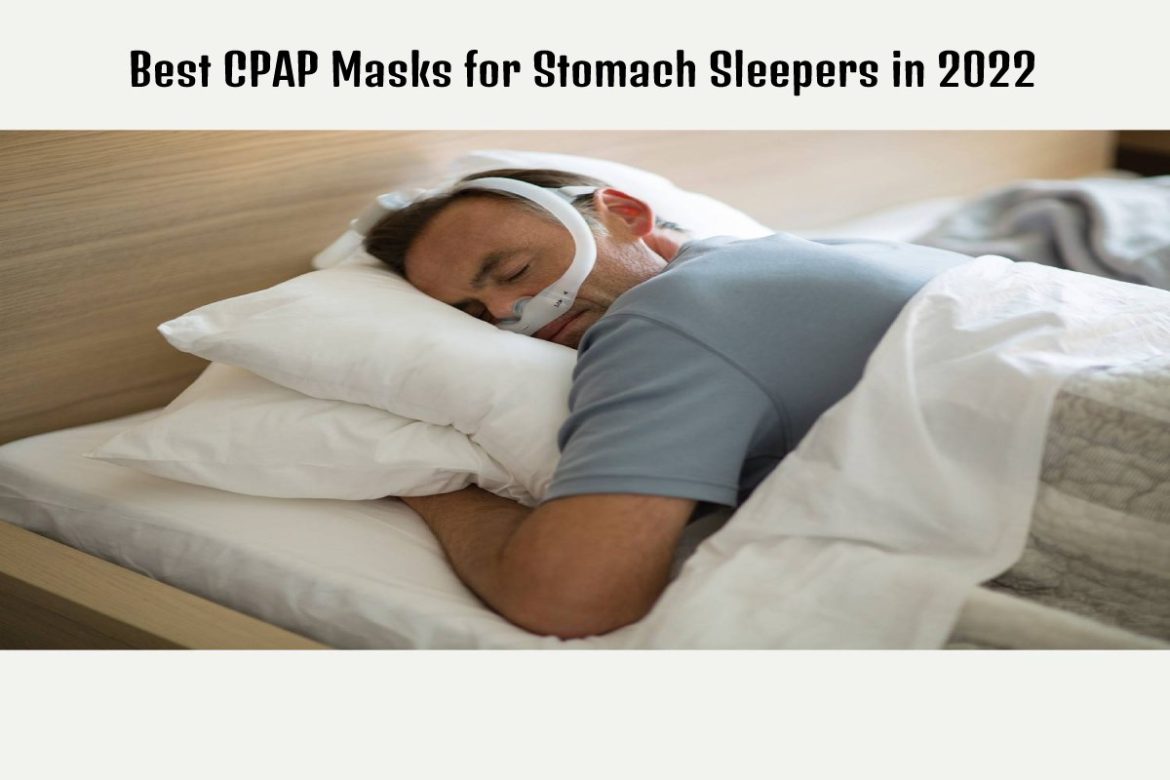Most people have a certain position that they customarily sleep in. They may not be able to fall asleep at all unless they are in their preferred position. Only about 16% of people habitually sleep on their stomachs, making it the rarest sleeping position.
Stomach sleeping isn’t a terrible position if you have sleep apnea. It can help to reduce airway obstruction because gravity pulls down on the tissues of your throat and mouth. However, finding a CPAP mask that allows you to lie on your stomach comfortably can be a challenge. A bulky mask may force your head into a position that puts stress on your neck, which can cause stiffness the next day. Sleeping on your stomach may also push your mask into your face, which can cause air leaks and is uncomfortable.
Nasal pillow masks, such as the ResMed AirFit P10 nasal pillow CPAP mask with headgear, are widely regarded as the best for stomach sleeping. They do not cover the nose but instead rest underneath it, keeping contact with the nostrils. The low profile of the nasal pillow mask helps to prevent the problems that larger masks can cause people who sleep on their stomachs. The masks are less likely to become displaced or knocked off completely while you sleep.
What To Do When You Sleep On Your Stomach And Have Sleep Apnea
If you breathe through your mouth while you sleep, you may have trouble using a nasal pillow CPAP masks because the air doesn’t go where you need it. However, you can address this problem with a chin strap that holds your mouth closed while you sleep, giving the air no place else to go but into your airway where it is needed.
Some types of nasal pillow masks position air tubes on either side of the face alongside the temples. This type may not work if you sleep on your stomach because the flow of air may be restricted. You may be able to prevent this problem if you use a pillow that is thin, not too firm, or made specifically for sleeping on your stomach. Another way to prevent this problem is to sleep with your head facing down with your forehead resting on the pillow. This puts no pressure on the air tubes at the sides if that is the type of nasal pillow mask you are using. It also helps gravity to work in your favour to prevent obstructions by pulling the throat and mouth tissues away from the airway.
Reviewing the Best Choices for My Sleep Needs
The best type of mask for sleep apnea patients who sleep on their sides is one with a low profile that is less likely to get knocked off, pushed out of place, or put stress on your neck. Often, this means a nasal pillow mask, but there are other low-profile options if you do not like this configuration. Once you decide on a mask that meets your sleep needs, you can purchase it along with other CPAP supplies from an online vendor.


